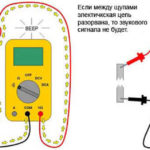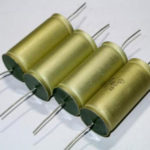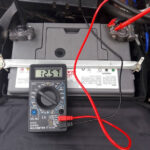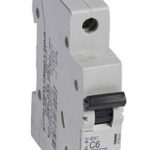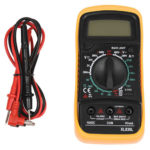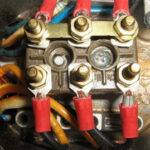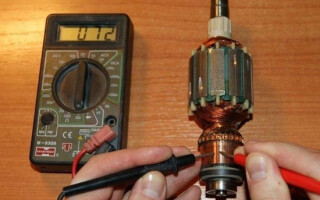The daily life of man is inextricably linked with electric motors of different configurations, on the work of which is based the action of various instruments and equipment. Such equipment we use constantly and quite often there are various malfunctions in their work, which is often associated with a faulty electric motor. In order to bring the device in working order it is necessary to know how to ring the electric motor. This will be discussed in this article.
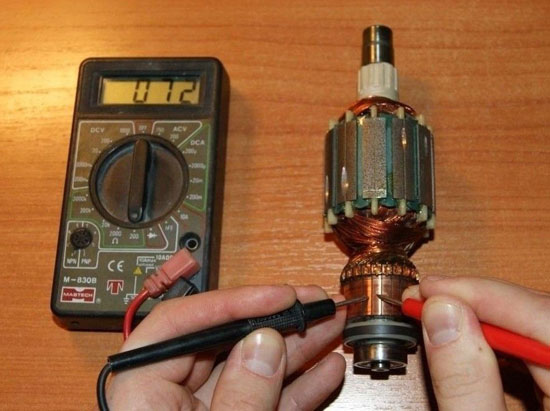
Contents
Which electric motors can be checked with a multimeter?
If the motor has no obvious external damage, there is a chance that an internal breakdown or short circuit has occurred. But not all electric motors can simply be checked for these defects with a multimeter with a multimeter.
For example, it may be difficult to diagnose DC motors, because their winding has almost zero resistance and can only be checked indirectly by a special scheme: simultaneously take readings from an ammeter and a voltmeter and calculate the resultant resistance value according to Ohm's law.
In this way all armature winding resistances are checked and the values between the collector plates are measured. If the armature winding resistances are different, then there is a problem, as in a good machine the values are the same. The difference in resistance values between adjacent collector plates should not be more than 10%, then the motor will be considered serviceable (but if an equalizing winding is provided in the design, this value can be up to 30%).
AC electric machines are divided into:
- synchronous: having stator windings located at the same angle of offset between them, which allows moving at a frequency synchronous to the speed of rotation of the applied force;
- squirrel-cage asynchronous (single-phase or three-phase);
- asynchronous with a phased rotor having a three-phase winding;
- commutator.
All of these types of motors are available for diagnostics by means of measuring instruments, including multimeters. In general, AC motors are fairly reliable machines and malfunctions are quite rare, but they do happen.
What malfunctions in an electric motor can be detected with a multimeter
A multimeter, a multifunctional electronic measuring device, is often used to check AC motors. It is available to almost every home handyman and allows you to identify certain types of faults in electrical appliances, including electric motors.
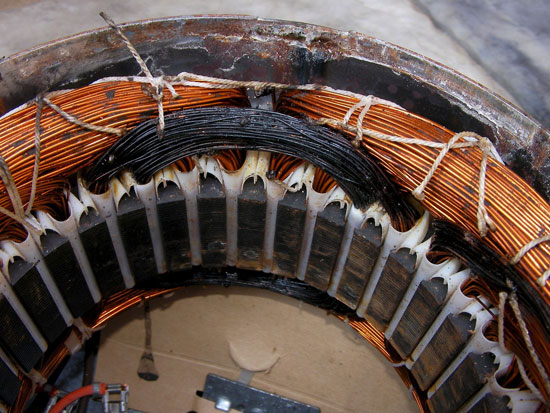
The most common faults that occur in electric machines of this type are:
- winding breakage (rotor or stator);
- short circuit;
- inter-turn short circuit.
Let's take a closer look at each of these problems and discuss methods of identifying such faults.
Check for winding breakage or continuity
A broken winding is a fairly common occurrence when a motor malfunctions. A winding break can happen in either the stator or the rotor.
If one phase of a star winding is broken, there will be no current in it, and the other phases will be overcurrent and the motor will not run. There can also be a break in a parallel phase branch, which will cause the serviceable phase branch to overheat.
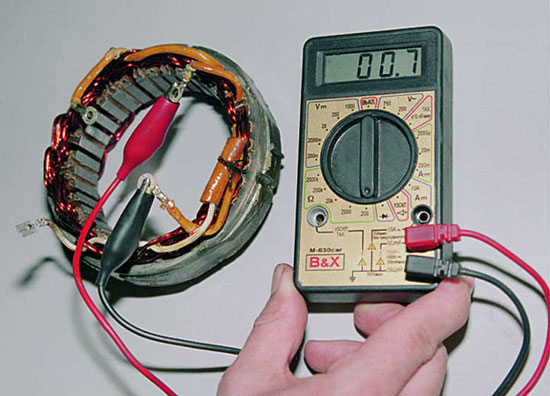
If one phase of the winding (between two conductors) connected in a delta circuit has been broken, the current in the other two conductors will be much less than in the third conductor.
If a break in the rotor winding occurs, there will be current fluctuations with a frequency equal to the slip frequency and voltage fluctuations, with the appearance of humming and the engine speed will be reduced, also there will be vibration.
These causes indicate a malfunction, but to identify the fault itself is possible by testing and measuring the resistance of each winding of the motor.
В motorsFor motors designed for 220 V AC voltage, the start winding and the work winding are tested. The resistance value of the starting winding should be 1.5 times greater than that of the working winding.
In 380 V electric motors, which are connected by "star" or "delta" schemes, the whole circuit must be disassembled and each winding must be checked separately. The resistance of each of the windings of such an electric motor should be the same (with a deviation of not more than five percent). But if a break occurs, the multimeter display will show a high resistance value, which tends to infinity.
You can also check the motor windings with the of the multimeter "wiretap".. This method allows you to quickly identify a break in the circuit, because there will be no sound signal, in a faulty circuit the multimeter will beep and a light indication is also possible.
Checking for short circuits
Another common fault in electric motors is a short-circuit to the frame. To find this fault (or the lack thereof) the following steps are taken:
- set the resistance measurement values of the multimeter to maximum;
- the probes are connected to each other to verify that the measuring device is in good working order;
- one probe is connected to the motor housing;
- connect the second probe to the leads of each phase in turn;
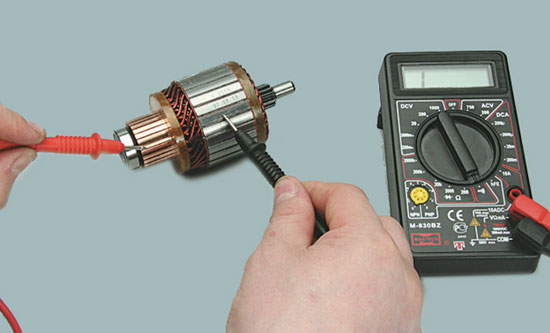
The result of such actions will be high resistance (several hundreds or thousands of megohms) when the motor is in good condition. "It is even more convenient to check the breakdown to ground with a multimeter: you need to perform the same actions described above and the presence of a sound signal will mean a violation of the integrity of the winding insulation and a short circuit to ground. By the way, this fault not only negatively affects the operation of the equipment, but also is dangerous to life and health in the absence of special protective devices.
Checking for inter-turn short circuits
Another type of fault is an inter-turn fault - a short circuit between different coils of the same motor coil. With such a fault, the motor will hum and its power will be noticeably reduced.
You can detect such a fault in several ways. For example, you can use a current clamp or a multimeter.
When diagnosing with a current clamp, the current values of each phase of the stator winding are measured and if the current value in one of them is too high, that is where the short circuit is located.
Measurement with a multimeter is carried out in the resistance measurement mode. Resistances of all three windings should be the same. It is important to understand that the instrument should be used with as little error as possible, because the difference in resistance may be small and it will be difficult to detect.
To measure the winding resistance connect the stylus of the multimeter to the ends of the different coils and check for contact in the "wireshots" mode or by measuring the resistance. If the difference in the measurements is more than 10%, there is a possibility of a short circuit.
Related articles:
